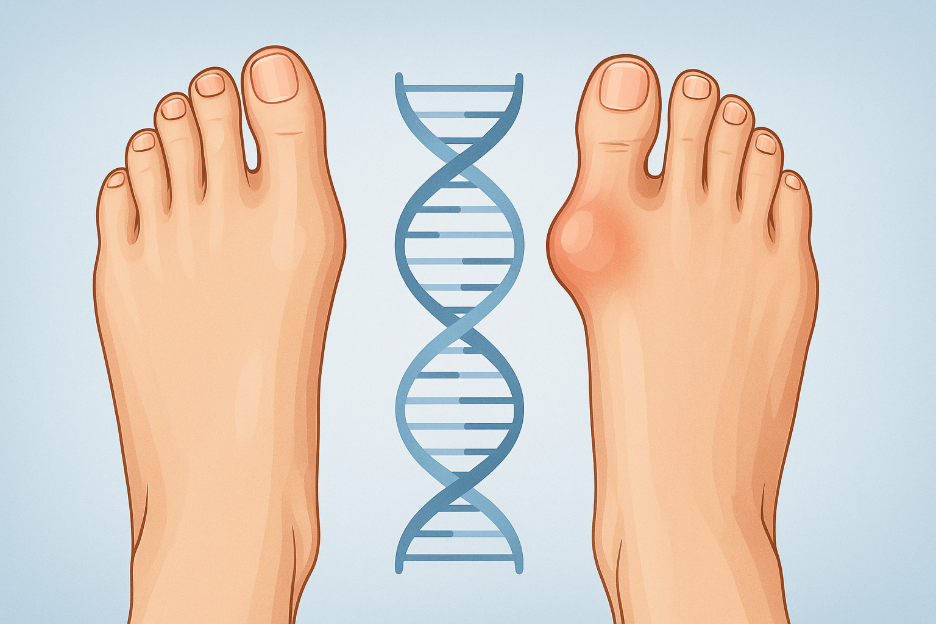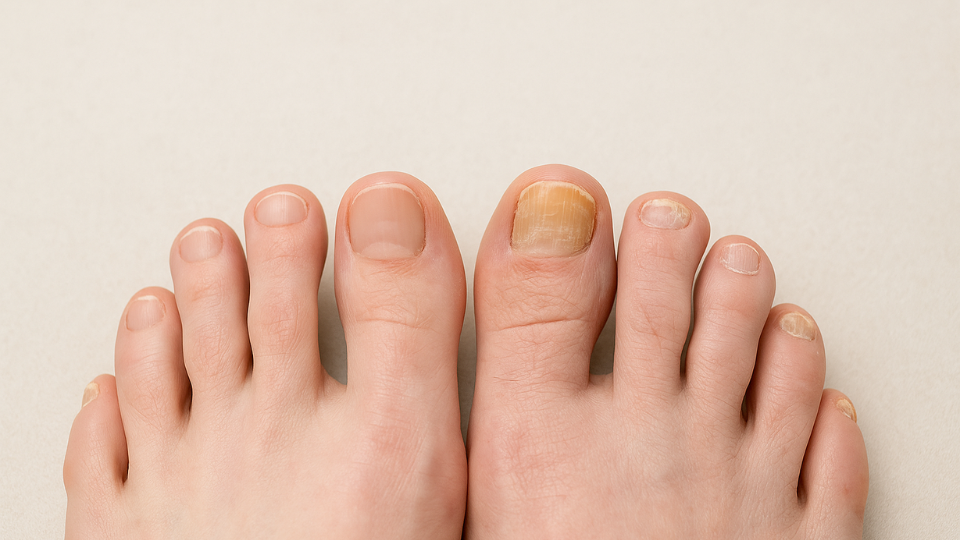Is Toenail Fungus Hereditary? What You Need to Know About Family Risk
Wondering if toenail fungus runs in your family? Learn about genetic risk, causes, and prevention from the podiatry specialists at FAS The Woodlands.
.png)
Have you ever noticed a familiar foot shape shared among your family members or heard stories about relatives struggling with bunions? If so, you might be wondering: Are bunions hereditary?
In this blog, we’ll explore the connection between genetics and bunion formation, what types of foot traits are commonly passed down, and what you can do to reduce your risk. Whether you’re beginning to see changes in your feet or simply being proactive, understanding the role of heredity is the first step to making informed decisions about your foot health.
A bunion (also called hallux valgus) is a bony bump that forms at the joint where your big toe meets your foot. Over time, the joint can become misaligned, pushing the toe inward and causing pain, stiffness, or swelling.
Symptoms may include:
Bunions can develop slowly, often getting worse without the right support or treatment. But why do some people get them and others don’t?
Yes, but it’s not the bunion itself that you inherit. It’s the foot type or biomechanical structure that makes bunions more likely to develop.
If your parents, siblings, or grandparents have bunions, you may be more likely to experience:
These inherited traits can place extra pressure on the big toe joint, gradually leading to bunion formation, especially when combined with other factors like tight shoes or long hours on your feet.
So when people ask, “are bunions hereditary?” the better answer might be: “You can inherit the blueprint for bunions, even if you haven’t developed one yet.”
Want to learn more about what causes bunions and how to treat them effectively? Check out our blog on bunion causes, treatments, and solutions.

Even if you have a family history, genetics aren’t the only factor at play. Lifestyle and environmental factors also play a role in whether or not bunions form, or worsen over time.
Wearing narrow, tight, or high-heeled shoes can speed up bunion formation by forcing your toes into unnatural positions. If you’re already predisposed, poor footwear can make things worse. Check out our guide to choosing the best shoes for foot pain and bunion relief.
Jobs or hobbies that keep you on your feet for long hours, especially on hard surfaces, can increase joint strain and accelerate bunion progression.
People with very flexible joints (often due to genetics) may be more prone to foot instability, which can contribute to bunions forming earlier or more severely.
While you can’t change your genetics, you can take steps to reduce your risk of developing bunions or stop them from getting worse:
In some cases, conservative care may not be enough, especially if the bunion is severe or causing ongoing pain. If you're wondering whether surgery is the right next step, our blog on do bunions require surgery can help you understand when it might be time to consider it.
So, are bunions hereditary? Yes, but that doesn’t mean they’re inevitable. Knowing your risk allows you to take proactive steps that keep your feet healthier for the long haul.
You don’t need to wait until your bunion is severe to get help. Early treatment can make a big difference in maintaining mobility and preventing pain. It might be time to see a podiatrist if:
At Foot and Ankle Specialists (FAS) The Woodlands, we evaluate your foot structure and symptoms to create a personalized care plan. Schedule a consultation with our experts, we’re here to help protect your foot health

Wondering if toenail fungus runs in your family? Learn about genetic risk, causes, and prevention from the podiatry specialists at FAS The Woodlands.